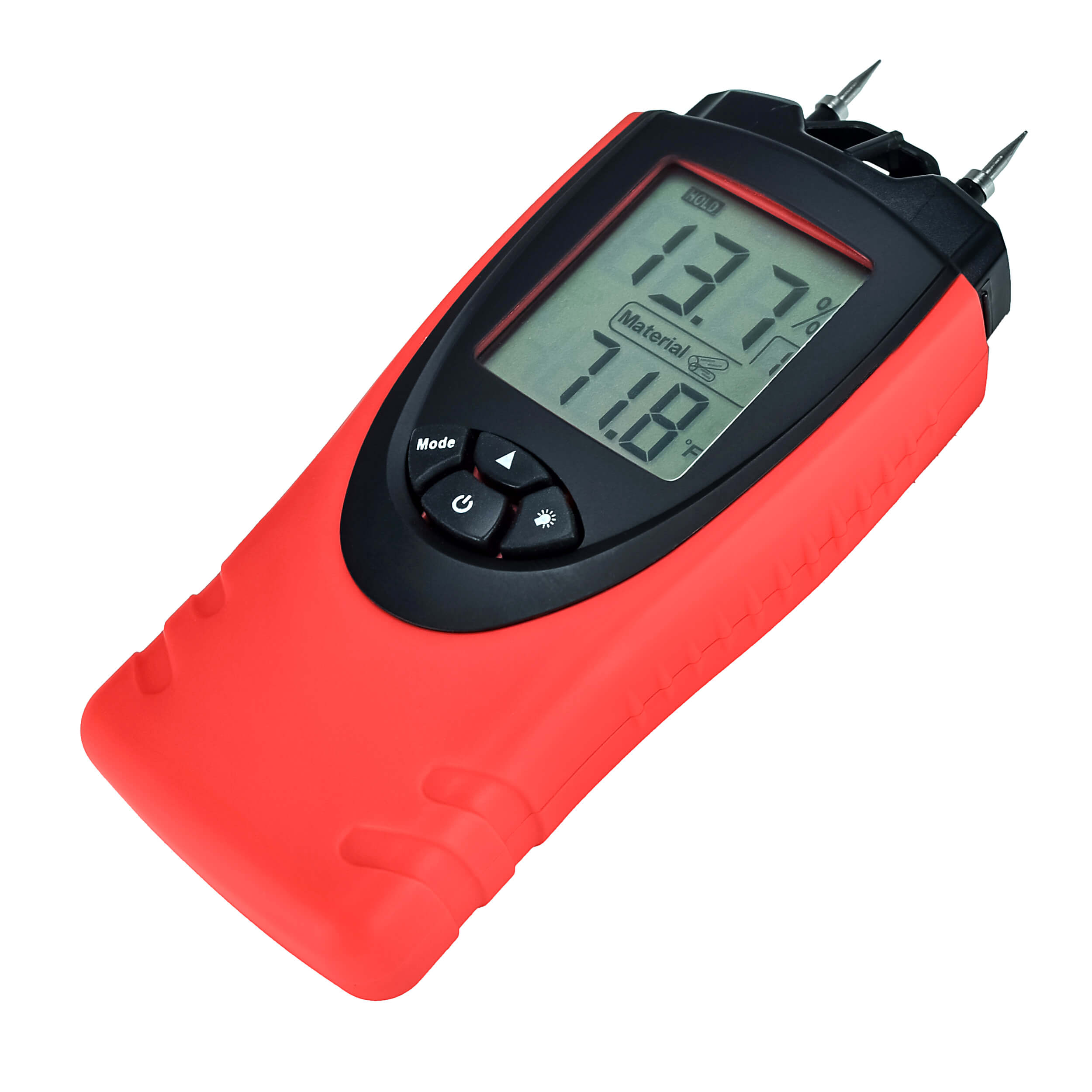Top 10 Benefits of Using a Moisture Meter for Definite Measurements in Your Home
Top 10 Benefits of Using a Moisture Meter for Definite Measurements in Your Home
Blog Article
Delve Into the Globe of Moisture Meters: Every Little Thing You Need to Know
In the realm of wetness meters lies a globe of precision and practicality that often goes undetected. Understanding exactly how moisture meters operate, the various types readily available, and their diverse uses can shed light on their importance in making sure high quality and efficiency.
How Moisture Meters Work
Moisture meters run by measuring the electrical conductivity or capacitance of materials to figure out the wetness content present. These meters are indispensable tools across numerous sectors, consisting of construction, agriculture, and woodworking. By using various techniques such as pinless or pin-type technology, wetness meters supply exact readings that assist specialists make notified decisions.
Pin-type moisture meters work by putting the sharp pins into the material being examined. On the other hand, pinless dampness meters use electro-magnetic signals to check a larger location without causing any kind of damage to the material's surface.
Despite the approach made use of, moisture meters play a vital function in stopping issues such as mold development, structural damage, or product flaws created by excess wetness. Recognizing how these meters work is essential for ensuring the quality and honesty of products in different applications.
Sorts Of Moisture Meters
Offered the essential function moisture meters play in numerous markets, it is necessary to understand the various types readily available to experts for accurately analyzing wetness levels - Moisture Meter. There are largely 2 primary sorts of dampness meters: pin-type and pinless moisture meters

On the other hand, pinless dampness meters utilize electro-magnetic sensor plates to check a bigger location of the product without triggering any type of damage. This kind is suitable for rapidly scanning big areas and is generally made use of for flooring, walls, and ceilings. Pinless meters are convenient for taking readings on completed surfaces without leaving any kind of visible marks.
Both sorts of moisture meters have their benefits and are selected based upon the particular demands of the job at hand. Recognizing the distinctions in between these kinds is crucial for specialists to make precise moisture evaluations.
Applications Across Industries
Building professionals count on wetness meters to assess the dampness levels in building products like drywall, concrete, and wood, which is critical for preserving architectural stability and avoiding issues like rot or mold and mildew. The flooring sector utilizes dampness meters to measure the dampness content in subfloors prior to installing different floor treatments, avoiding pricey damages due to excess dampness. In the food industry, wetness meters are made use of to keep an eye on and control moisture levels in items such as grains, nuts, and dried fruits to preserve quality and high quality.
Tips for Making Use Of Moisture Meters
When gauging the moisture material in numerous products,Utilize the wetness meter's calibration setups to ensure accurate analyses. Calibration is crucial for the appropriate performance of a dampness meter. Before each use, it is suggested to examine and adjust the calibration settings according to the certain product being examined. Furthermore, see to it the meter is readied to the appropriate moisture variety for the material you are gauging to acquire the most exact outcomes.
When using a pin-type go to website moisture meter, place the pins to the suitable deepness recommended for the product being checked. This ensures that the wetness readings are taken from the appropriate depth within the material, providing an extra exact depiction of its wetness material. For pinless wetness meters, remember to maintain correct call with the product's surface area to get reputable readings.
Frequently check and change the batteries in your wetness meter to avoid imprecise analyses due to low power. When not in usage to lengthen its life-span and preserve its precision, Shop the meter in a dry and risk-free place. By adhering to these suggestions, you can take full advantage of the efficiency of your wetness meter and get accurate dampness content dimensions across various materials.
Upkeep and Calibration
To ensure the precision of dampness material dimensions, regular maintenance and calibration of the dampness meter are important actions in its proper functioning. Upkeep involves keeping the dampness meter cost-free and clean from debris that might influence its analyses. It is necessary to follow the supplier's standards for cleansing to stop damage to the gadget. In addition, regular calibration is required to confirm the precision of the analyses. Calibration readjusts the moisture meter to make certain that it provides reliable and consistent results.
Calibration should be carried out periodically, especially if the moisture meter is used frequently or in crucial applications where precise measurements are called for. Several dampness meters include calibration tools or can be adjusted by expert services. Moisture Meter. It is recommended to keep a log of calibration days and results to track the efficiency of the wetness meter in time. By maintaining and calibrating the dampness meter frequently, individuals can trust the precision of the dampness web content measurements obtained. view website
Conclusion

Finally, dampness meters play an important role in different sectors by accurately determining the dampness web content of materials. Comprehending just how these devices function, the various types offered, and correct upkeep and calibration are crucial for acquiring trusted results. Whether in construction, manufacturing, or farming, making use of dampness meters aids ensure quality assurance and effectiveness in procedures.

In conclusion, dampness meters play an essential role in various sectors by properly gauging the dampness web content of materials.
Report this page